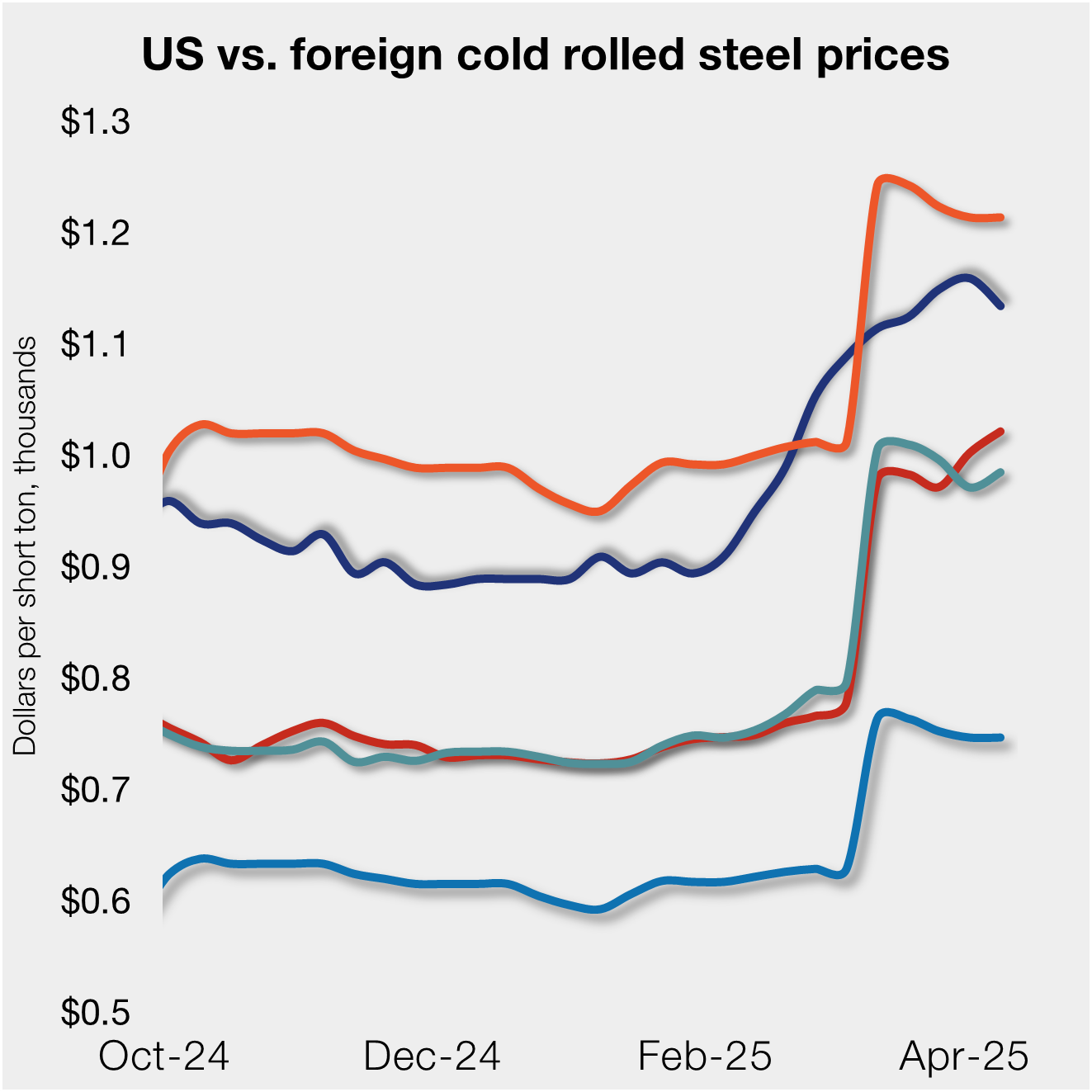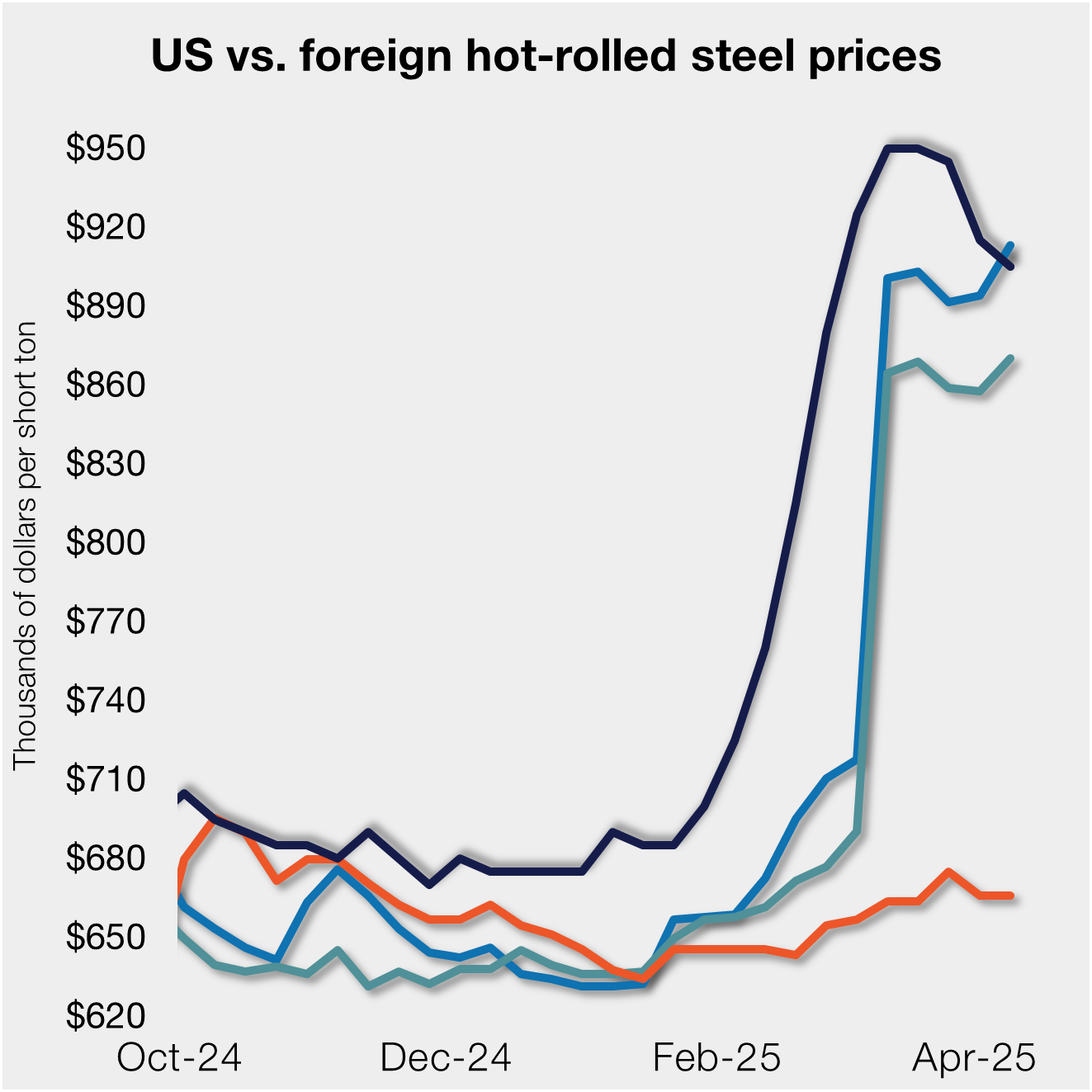Steel Products

STI sees jobs, tariffs, and commercial as top 2025 priorities
Written by Ethan Bernard
December 13, 2024
The Steel Tube Institute (STI) has outlined three priorities for 2025: skilled trade jobs, tariffs, and commercial building adaptations.
STI said the priorities reflect anticipated changes to steel and manufacturing. These are due to the incoming presidential administration.
Jobs
STI said a renewed interest in domestic manufacturing will boost local economies.
Additionally, it will “create hundreds of thousands of high-paying skilled labor jobs, which are becoming increasingly appealing to young professionals,” according to a statement on Wed, Dec. 11.
“The push to trade gasoline-powered cars, natural gas heating and gas stoves for their electric counterparts will drive demand for skilled electricians,” Dale Crawford, executive director of STI, said in the statement.
“This is why the Steel Tube Institute and its member companies are advocating for a new generation of skilled tradespeople to support electrification across industries,” he added.
Crawford said STI hopes the next generation is aware of opportunities “outside of college and the gig economy.”
Tariffs
STI supports tariffs on imports for items that can be produced domestically.
The institute and its member companies “are prioritizing their support for more funding for commercial enforcement for customs and border protection.”
“As innovation continues to add complexity to products, customs and border protection agents must be equipped with the resources to properly implement tariffs,” STI added.
The organization has broadened its bylaws to join forces with its Canadian counterparts. They aim “to ensure continued quality and clean practices are appropriately enforced as steel products are imported from foreign manufacturers.”
Commercial building adaptations
STI cited a recent Deloitte study noting that commercial real estate is expected to rebound in 2025. Global economic growth and lower inflation are seen bringing stability to the market, the study said.
This will give “new life to buildings that have remained vacant in the years since the pandemic,” STI said.
The institute expects changes to the way older commercial buildings – especially high-rises – are used “will necessitate changes to how those buildings are wired.”
“These changes, coupled with growing pressure to demonstrate sustainability, make a strong case for the use of steel conduit in electrical raceways,” STI added.
STI’s Crawford said companies returning to the office after working remotely “are looking for buildings that meet their customers’ demand for efficiency and sustainability.”
The Steel Tube Institute is a Chicago-based organization that promotes the steel tube industry.

Ethan Bernard
Read more from Ethan BernardLatest in Steel Products

CRU tariff webinar replay now available
CRU’s latest webinar replay on how Trump’s tariffs affect the global steel market is now available on our website to all members. After logging in at steelmarketupdate.com, visit the community tab and look under the “previous webinars” section of the dropdown menu. You’ll find not only this special CRU webinar but also all past Community […]

US, offshore CRC prices diverge
US cold-rolled (CR) coil prices declined this week, slipping for the first time since early February. Most offshore markets deviated, moving higher this week.

Construction growth slowed in March on tariff woes: Dodge
The decline comes after reaching a record high in January to kickstart the year.

Return of S232 zapped gap between US and EU HR prices, Asian HR remains cheaper
Domestic hot-rolled (HR) coil prices declined this week for a third straight week. Most offshore markets bucked the trend and gained ground. Uncertainty in the US market around tariffs, especially after “Liberation Day,” caused US prices to slip as buyers moved to the sidelines. It’s unclear to date whether the 90-day pause on the more […]

SMU Steel Demand Index momentum slows further
SMU’s Steel Demand Index growth eased again, according to early April indicators. The slowdown comes after the index reached a four-year high in late February.
